Donate now to support flood relief and rebuilding efforts.
It was supposed to be a normal Dashain return trip, but the journey crumbled. What should have taken eight hours stretched into nineteen — buses stranded, roads vanished, and the fragile lifelines that connect mountain people to services and markets ripped apart. That was the reality for many travelling from Okhaldhunga to Kathmandu this week — a harsh reminder of how Nepal floods 2025 are not just storms, but ruptures in geography and life.
Between October 4 and 6, relentless rainfall unleashed floods and landslides across eastern and central Nepal. Villages were swept away, roads disappeared, and rescue teams rushed to the scene. Official tallies indicate at least 53 lives lost, dozens more missing, and hundreds displaced (Associated Press, 2025) – with Ilam district bearing the brunt: 37 deaths alone, entire neighborhoods erased.
The scale is staggering, the needs immense, and for organizations like Volunteers Initiative Nepal (ViN), this is a moment to act. However, action without clarity falters. In this article, we map the human stories, the damage, the structural causes, and the paths forward — and invite you to help rebuild not just homes, but hope.
What Happened: Timeline & Geography
The deluge began around October 3–4, as moisture-laden air systems moved northwards from the Bay of Bengal, striking eastern Nepal with ultra-localized intensity (Al Jazeera, 2025). Some weather stations recorded upwards of 300 mm of rain in 24 hours, far beyond the threshold of “extreme rainfall” (150 mm/day).
Unlike typical monsoon patterns that taper by late September, this event arrived later, underscoring the shifting weather regimes. The paradox: rainfall quantities were not unprecedented compared to past events, but the concentration and location of downpours broke slopes, overwhelmed drains, and triggered havoc.
The Ilam district, in Koshi Province, suffered especially. In addition to Ilam, districts such as Jhapa, Panchthar, Udayapur, Khotang, and Kavrepalanchok saw landslides, flooding, and infrastructure damage (Kathmandu Post, 2025). River systems, including the Koshi River, surged beyond danger thresholds (Reuters, 2025).
By October 6, authorities reported 47 total deaths, several missing, widespread road blockages, and bridges washed out (Reuters, 2025). Multiple highways and mountain connectors were severed. In Ilam alone, 39 deaths and 276 displaced families have been confirmed, with over 132 houses destroyed entirely and 401 partially damaged (Kathmandu Post, 2025).
The effect is not just an isolated tragedy — it is a systemic rupture.
Lives in the Rubble: Human Stories from the Edge
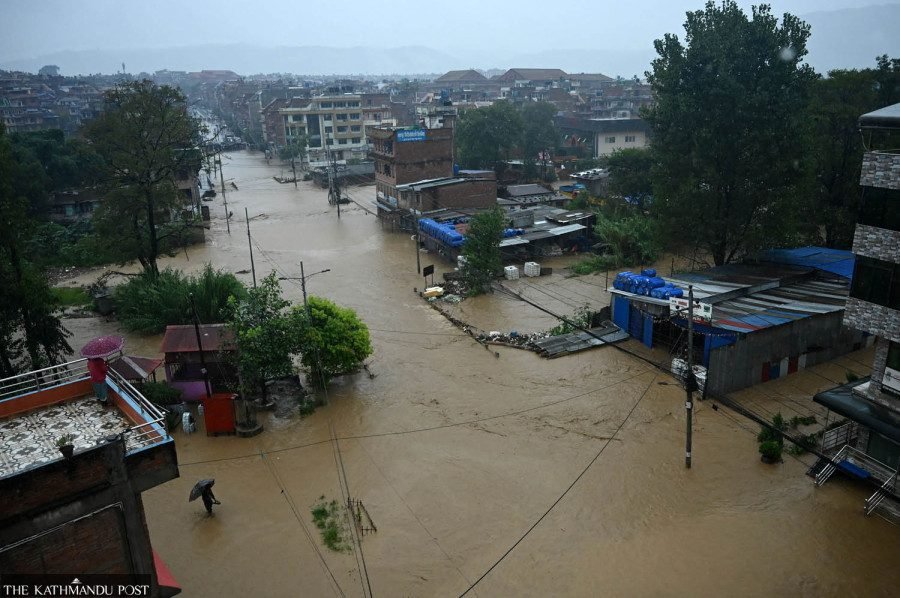
“We were asleep. When dawn came, my home was gone.”
In Manebhanjyang, Ilam, the Chhetri family awoke during Dashain to a scene of devastation. Their home, once filled with festive laughter and the scent of candles, had vanished beneath the landslide. The nearby roads were wiped out; helicopters had to land miles away. Supplies that usually cross daily traffic lines could not reach them for days (Kathmandu Post, 2025).
On another route, a ViN team member recounts:
“We left Okhaldhunga at 4:30 in the morning. Roads we knew had collapsed. We were diverted via footbridges, dirt tracks, and old trails. Places once reachable in 8 hours took us nearly 19 hours. Relief vehicles were stalled, and people crying for help took to walking uphill with children.”
His account crystallizes how disaster multiplies in the cracks — when geography, infrastructure, and time conspire against rescue.
Nearby in Ghos, Ilam, five members of the Dambar Bahadur Tamang family — including children — were buried under debris as they slept (Kathmandu Post, 2025) . In Jhapa, over 25,000 people were displaced, with 5,000 homes submerged (Kathmandu Post, 2025) in the wards of Ilam — Suryodaya, Deumai, Sandakpur, and Mangsebung — where the damage registers in grief, not just numbers.
“My house and my job both washed away,” said Lakpa Sherpa, who eked out a living collecting river gravel along the Mai River. “Now I have nothing left.” (Kathmandu Post, 2025).
Some villages have been rendered nearly unreachable. In Manebhanjyang, the only route now connects through India (Sub-Inspector Surendra Dotel, AP Force) (Kathmandu Post, 2025). Meanwhile, locals say relief has been slow to arrive, long before rebuilding begins.
The Price of Collapse: Infrastructure & Economic Losses
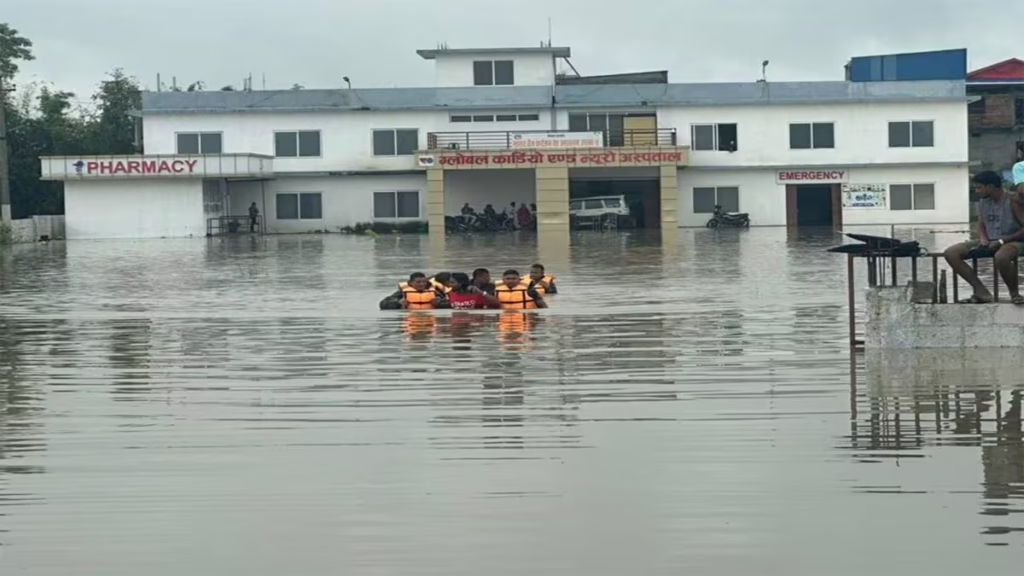
The human loss is heartbreaking — but behind it lies a colossal infrastructure damage tally that will shape Nepal’s recovery for years to come.
Blocked roads, collapsed bridges.
Major highways, such as the Mechi Highway and the Kanchanjunga–Kechana and Nepaltar–Biblyate routes, are now unusable in many stretches (Kathmandu Post, 2025). As the roads crumble, trucks and ambulances are unable to pass. In Ilam, locals say “not a single truck has arrived for five days” (Kathmandu Post, 2025).
Across the country, highways linking Kathmandu and mountain districts are severed, forcing relief convoys into narrow, fragile detours that increase delivery time, risk, and cost (Reuters, 2025).
Displacement, housing, and schools
In Ilam, 132 houses were destroyed, and 401 suffered partial damage (Kathmandu Post, 2025) In affected municipalities, schools, drinking water systems, irrigation channels, and bridges have been destroyed — the kind of damage that undercuts recovery even when physical rebuilding begins (Kathmandu Post, 2025).
Financial toll
While precise national assessments are still underway, early estimates and historical precedents hint at high figures. Local governments are budgeting tens to hundreds of millions of rupees for rebuilding (Kathmandu Post, 2025). The Koshi Province government has already dispatched food, tarpaulins, and blankets via helicopter and committed to financial grants (Annapurna Express, 2025).
Nationally, reconstruction after past disasters has required NPR 18–25 billion in infrastructure funding, and this event may demand more (Kathmandu Post reports past allocations) (Kathmandu Post, 2025). The actual costs will emerge over weeks and months, especially when factoring in slope stabilization, climate proofing, and long-term resiliency.
Government & NGO Response: What Is and Is not Working
Official mobilization and challenges
The government acted quickly to announce road closures, deploy helicopters, and issue severe rainfall alerts (Al Jazeera, 2025). The interim prime minister’s leadership received praise, in some quarters, for the early warning and centralized coordination (Al Jazeera, 2025).
However, execution is more complex than pronouncement. Many remote settlements remain cut off. In some districts, such as Manebhanjyang, aid must first arrive via India (Kathmandu Post, 2025). Helicopters carry only small loads (≈approximately 1,000 kg), and their flights are constrained by terrain and unstable weather (Rising Nepal, 2025.
The Koshi provincial government was quick to dispatch rice, lentils, cooking oil, mattresses, blankets, and tarpaulins by air and ground to Ilam (Annapurna Express, 2025). They have also pledged NPR 100,000 to each family that lost a loved one (Kathmandu Post, 2025). In some municipalities, free buses are being run for stranded travelers (Rising Nepal, 2025).
NGOs & volunteers
Local and international NGOs, including Volunteers Initiative Nepal (ViN), are actively participating in the distribution of relief, including food, temporary shelter, and supply chains, to cut-off villages. Their staff and volunteers are often the first boots on the ground, working closely with district authorities, local communities, and the military.
ViN’s ongoing projects provide preexisting networks that can pivot toward emergency relief. In one mission, ViN volunteers traversed newly blocked mountain trails to distribute essential resources. At ViN’s working areas, ViN has formed and trained disaster risk management task forces, which are active and support the communities.
However, NGO efforts face familiar barriers, including a lack of real-time maps, blocked access, funding gaps, and coordination overhead. The speed at which terrain gives way often outpaces the speed at which help can arrive.
Why This Happened: Terrain, Climate & Infrastructure
The “how” of this disaster is not simple, but the fingerprints of change are visible:
1. Ultra-concentrated rainfall
Meteorologists report that some areas experienced 300+ mm in 24 hours — double what is usually considered “extreme” — in districts like Ilam and Rautahat (Al Jazeera, 2025). The effect: the slopes could not absorb the deluge, triggering sudden slides.
2. Topography and fault lines
Nepal’s narrow, steep terrain concentrates rain runoff. Slope gradients, fractured geology, and intermittent gullies make many hillsides precarious. When heavy rain runs off instead of infiltrating, landslides become almost inevitable (Al Jazeera, 2025). .
3. Unplanned construction & infrastructure stress
The expansion of roads and buildings often disrupts natural drainage paths and compromises slope stability. Poorly engineered roads — without adequate drainage or retaining walls — amplify damage. The Narayangadh–Mugling highway, for example, is frequently hit by repeated slides due to inadequate slope protection (Al Jazeera, 2025).
4. Changing climate patterns
This October event echoes last year’s late-season flooding, which resulted in 224 deaths in 2024 (AP, 2025). . Experts argue that climate change intensifies the hydrological cycle — making back-to-back extreme monsoon episodes more likely (Al Jazeera, 2025).
In short, these floods are not one-off anomalies. They are proof that Nepal’s infrastructure, planning, and policy are colliding with a shifting climate.
The Road to Rebuild: Needs, Strategy, and Vision
What happens now matters more than what has already happened. The recovery must avoid falling into the same traps.
Short-term priorities (0–3 months)
- Shelter: tarps, tents, materials for temporary housing.
- Food, potable water, medicines, and hygiene kits.
- Road clearance and debris removal to restore access to isolated communities.
- Medical outreach, trauma counseling, and disease surveillance (waterborne, vector-borne).
- Cash assistance for families who lost livelihoods.
Medium- & long-term goals (3 months to years)
- Rebuild roads, bridges, and slope protection projects with climate resilience.
- Relocate or retrofit housing positioned on vulnerable hillsides.
- Strengthen early warning systems and localized rain runoff monitoring.
- Enforce land-use regulation, especially in slope zones.
- Implement parametric insurance or risk financing tools to effectively manage risk.
- Transparent procurement and community oversight in reconstruction contracts.
Cost & funding
Preliminary local estimates in Ilam suggest that house damage, road reconstruction, and infrastructure losses are running into hundreds of millions of rupees (Kathmandu Post, 2025). Provincial and federal governments are allocating funds; however, donors and international agencies will be needed to fill the gaps.
Accountability & governance
Transparent budgeting, community participation, audit trails — these must be baked into every project. The trust broken by disaster is fragile; rebuilding must not further erode it.
How You Can Help RIGHT NOW (mid-article call to action
You do not have to be in Nepal to make a difference. Here is how to support Nepal flood victims 2025:
- Donate — Funds enable the quick deployment of relief goods, allowing for flexibility in allocation.
- Volunteer/Partner — If you have skills in logistics, engineering, health, or communications, consider joining the field or remote support team.
→ ViN’s volunteer/partnership page - Share — Spread verified updates, fundraisers, and map needs in your networks.
- Advocate — Ask your local MPs or institutions to support Nepal’s reconstruction with a climate focus.
Every dollar, share, and voice matters.
FAQs / Common Questions
Which areas were most affected by the Nepal floods in October 2025?
Eastern districts, such as Ilam, Jhapa, and Panchthar, are linked to central routes, including those leading to Kathmandu. The Koshi River basin also saw surges. Major highways connecting mountainous terrain were blocked. (Reuters, 2025)
Is this part of Nepal’s monsoon season extension?
Yes — experts say this late-season rainfall signifies that traditional monsoon boundaries are shifting, likely due to climate change (Al Jazeera, 2025).
Are there maps or photos of the Nepal landslide map, Oct 2025 / or photos of the Nepal floods, Oct 2025?
Several media outlets have published galleries and maps (Al Jazeera, AP) (Al Jazeera gallery, 2025) ViN is also collecting and planning to publish field images.
How many roads are closed in Nepal due to the October 2025 landslides?
At least multiple major highways — including the Mechi, alternate connectors in Ilam, and Kanchanjunga roads — are blocked. In Ilam, some remote roads are completely severed for days (Kathmandu Post, 2025).
What about farm damage from the Oct 2025 Nepal floods?
Though complete assessments are pending, farmland near riverbanks and in the Terai plains has been inundated. In Jhapa, floodwaters submerged entire agricultural fields, destroying yields and food stocks (Kathmandu Post, 2025). .
Are rescue operations still ongoing?
Yes — rescue teams from Nepal Army, Armed Police Force, local volunteers, and NGOs are active. Helicopters, ground troops, motorboats, and ambulances are being used where possible (AP, 2025)..
Global Context & Comparisons
Nepal’s 2025 floods echo crises elsewhere:
- In India’s Darjeeling region, rains caused landslides and floods that contributed to over 70 fatalities across Darjeeling and Nepal (Reuters, 2025).
- The scale and sequencing of this back-to-back flooding mirror events across South and Southeast Asia, where climate shifts are stressing infrastructure beyond previous norms.
As climate-driven extreme rainfall becomes increasingly common globally, Nepal’s rebuilding efforts offer valuable lessons for resilience everywhere.
Moving Forward: Building Back Better
The damage wrought by the Nepal floods of 2025 and / Nepal landslide of October 2025 is not just material. It is a fracture in trust, connection, and safety. However, repair is possible — if we insist that rebuilding is not just restoring what was, but imagining something more substantial and longer.
Volunteers Initiative Nepal (ViN) is committed to staying in communities for the long haul — distributing relief, assessing needs, coordinating volunteers, and pushing for climate-aligned reconstruction.
Nepal’s hills will heal. However, only if we act together, with heart and rigor.
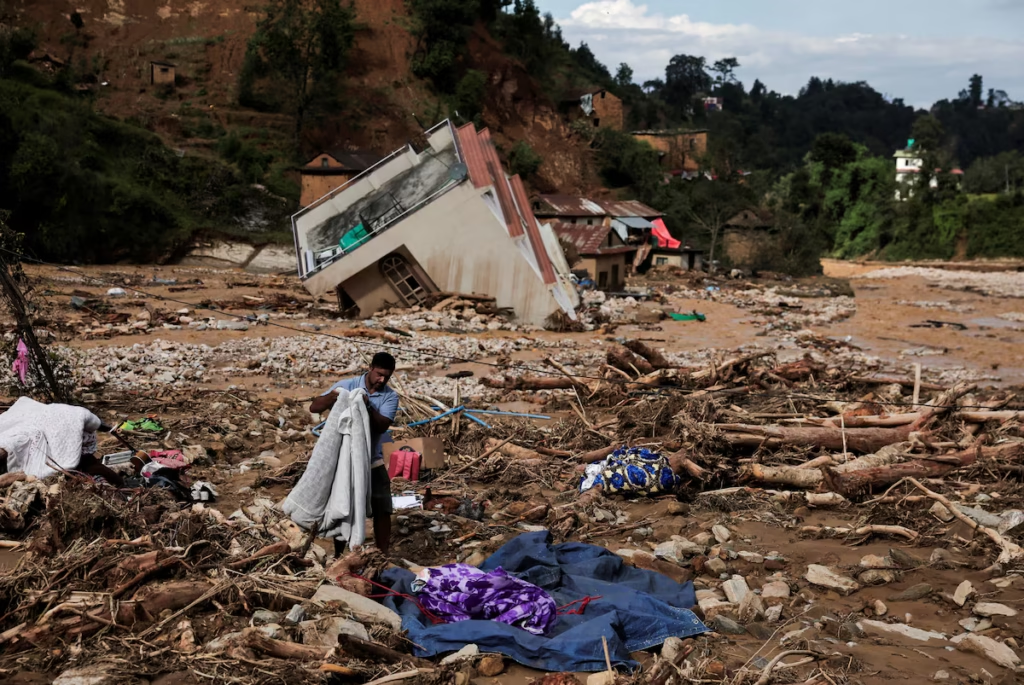


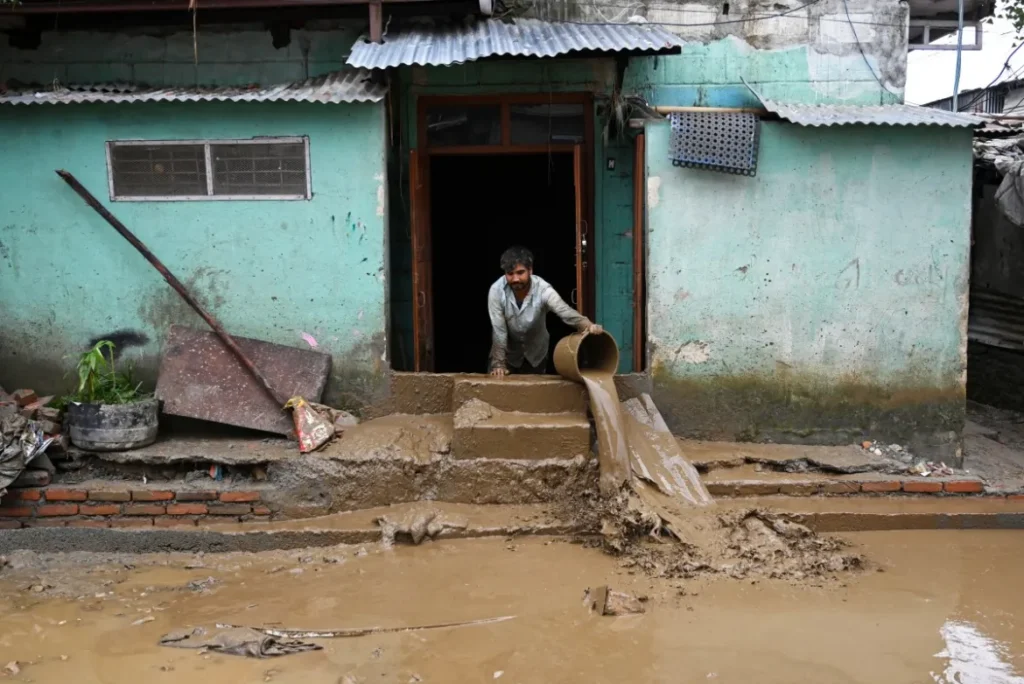


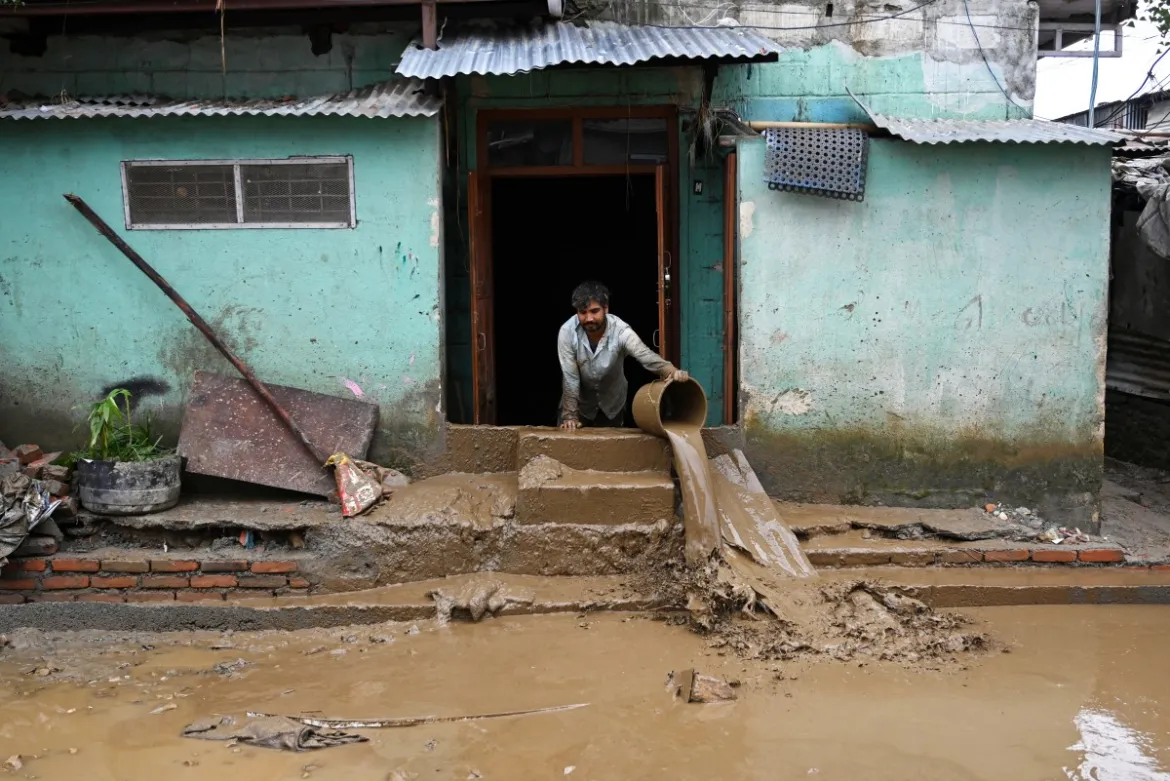
 Member of
Member of